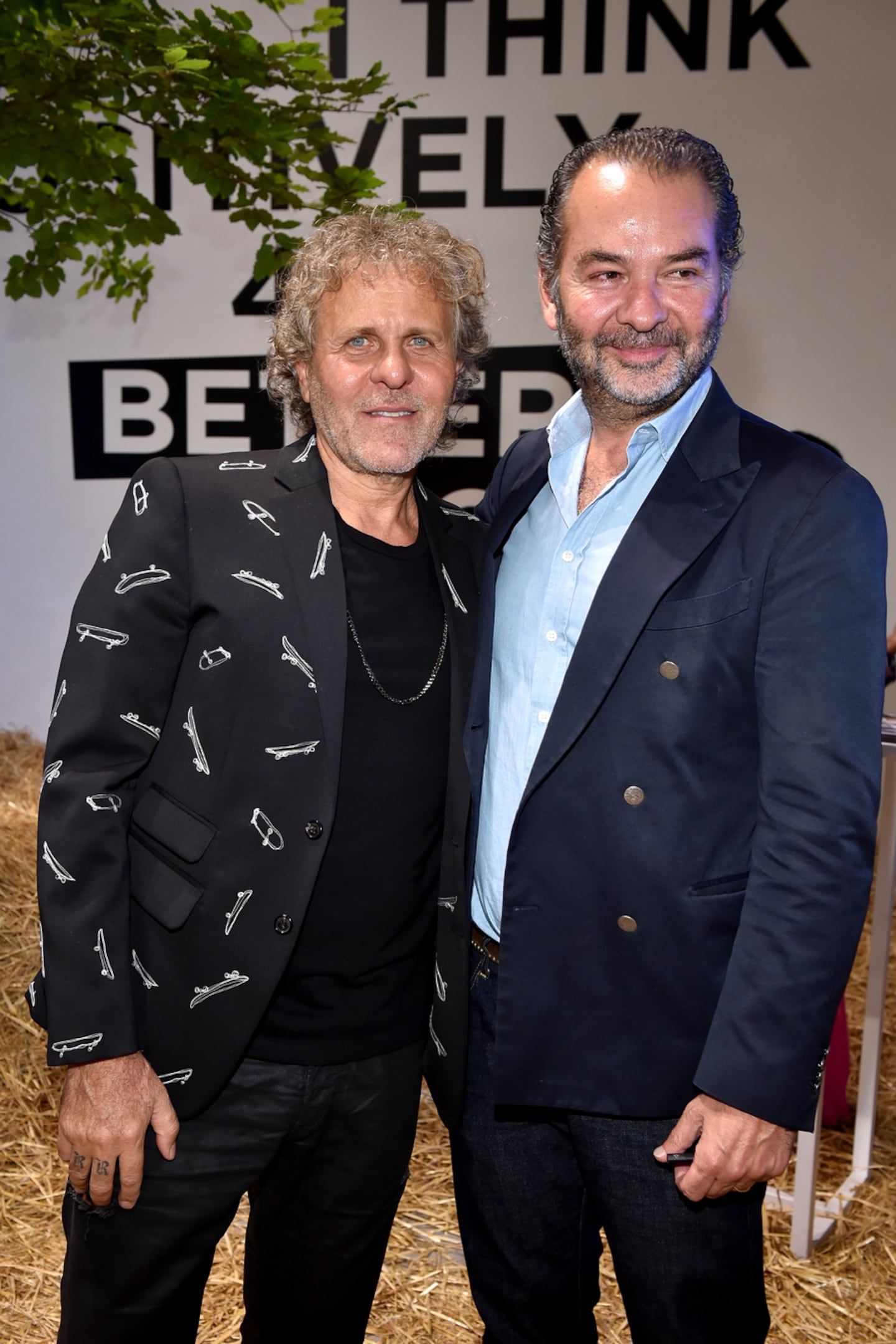
The Business of Fashion
Agenda-setting intelligence, analysis and advice for the global fashion community.

Agenda-setting intelligence, analysis and advice for the global fashion community.

Carlo Rivetti had always turned down offers to buy his brand, Stone Island, wary that a new owner would scale up too quickly and risk damaging its tribal appeal. But the coronavirus pandemic shook Italy and its fashion sector to the core. Even though Stone Island was one of the rare brands that continued to grow during the pandemic, Rivetti started to feel differently about going it alone.
“I saw how the world can enter an unbelievable crisis in just one second,” he said.
The 65-year-old entrepreneur ended up selling his brand for $1.4 billion to its larger rival Moncler, which also trades in luxury puffer coats and hoodies, in a rare coming-together of Italian fashion brands. As part of the deal, Rivetti reinvested some of the proceeds from the sale in Moncler chairman Remo Ruffini’s family holding company, securing seats on the combined company’s board and managing to retain roles at Stone Island for himself and his family. Ruffini called Moncler’s acquiring another brand for the first time a “milestone moment.”
“Now I feel Stone Island is in a safe harbour,” Rivetti said.
ADVERTISEMENT
The deal comes as Italian fashion companies are punching back after decades of watching the country’s most iconic brands being sold off to foreign buyers. Be it French conglomerate LVMH buying Fendi and Bulgari, rival Kering snapping up Gucci Group and Pomellato, Qatari investment vehicle Mayhoola purchasing Valentino or, more recently, New York-based Michael Kors (now Capri) acquiring Versace, Italy has struggled to hold onto its fashion champions and form its own fashion groups. Diesel founder Renzo Rosso’s OTB — which owns Marni, Maison Margiela and others — is an exception.
But Italians are starting to make more acquisitions of their own, snapping up companies both within and outside the country’s borders. In 2018, Ermenegildo Zegna kicked off the action by acquiring New York-based Thom Browne. And since Moncler’s Stone Island deal last fall, OTB has bought Jil Sander, while the Agnelli family’s Exor group, best known for controlling the carmaker Ferrari, acquired the Hermès-backed Shang Xia label as well as a 24 percent stake in Parisian shoemaker Christian Louboutin.

The window of opportunity may have passed for a would-be “Italian LVMH” to emerge— with €45 billion in annual revenue, LVMH now operates at a scale where an Italian player would be hard-pressed to compete financially to acquire a prized asset. It’s a similar story for Kering, with €13 billion in sales.
But the fact that the two French groups that dominate luxury fashion have grown into another stratum has also created opportunity further down the food chain.
Having learned from their struggles managing small brands like Pucci at LVMH and Brioni at Kering, the French rivals are increasingly wary of taking on assets that could end up being distractions for senior managers, or where they are unsure to create value.
“If you’re a fashion brand with less than $1 billion in annual sales you’re not really on their radar screen anymore,” Mario Ortelli, a London-based luxury consultant, said.
Italian companies, by contrast, have realised they can benefit from “rebalancing” through deals that help reach a different client (as with conservative Zegna’s bid for fashion-forward Thom Browne). And while the French groups excel in managing brands, Italian acquirers typically apply a more hands-on approach with on-the-ground expertise in manufacturing, logistics, and distribution.
If you’re a fashion brand with less than $1 billion in annual sales you’re not really on their radar screen anymore.
“They find industrial synergies,” Ortelli said. “Italian acquirers can be the right steward for a brand at a certain stage in its development.”
ADVERTISEMENT
Those industrial synergies could be all the more important as Italian fashion seeks to recover after sales fell by 25 percent last year, according to national fashion chamber CNMI, and as Italy’s rapidly consolidating supply chain makes it harder for independent brands to profitably produce high-quality goods at a saleable price. The number of companies operating in Italy’s famously fragmented supply chain fell by around 20,000 since 2011, CNMI said, and that loss can be expected to accelerate when state aid during the pandemic is eventually phased out.
Meanwhile, luxury accessories, long the industry’s profit driver, have increasingly become a winner-takes-all category, dominated by the biggest brands like Louis Vuitton. With the window narrowing for smaller fashion labels like Jil Sander or Thom Browne to transform themselves into handbag brands, they could benefit from remaining in the hands of seasoned ready-to-wear groups like Zegna, Moncler and OTB — all of whom remain committed to navigating the tricky business of making money on high-end apparel.
“There are a lot of buyers out there who can give money but without structure. If you find someone who can sponsor you logistically it’s much better,” OTB’s Renzo Rosso said.
Rosso says he’s still on the lookout for more brands where OTB could add value by pooling resources on production, distribution and marketing. Since the pandemic, group support has also been key for supporting brands’ transition to e-commerce and digital showrooming, he said.
The hands-on approach of Italian buyers hasn’t always worked in their favour, however: in the late 1990s and early 2000s, Prada’s acquisitions of Jil Sander and Helmut Lang both flopped as the labels’ founding designers jumped ship amid chief executive Patrizio Bertelli’s push to impose new strategies.
But there are signs Italian companies’ have learned from past fumbles. Announcing its stake in Louboutin, the Agnelli family’s Exor fund was careful to specify that it wasn’t creating a fashion group or trying to impose any common strategy. At Thom Browne, the progressive integration of the label under Zegna’s umbrella has hardly been disruptive.
The problem with Italian entrepreneurs was that they would never see a brand and think about how to team up — they only see a rival.
And while Rosso was criticised by some fashion fans for pushing out the Castiglioni family after acquiring Marni in 2015, he’s ultimately been lauded for giving a long creative leash to the house’s next creative director, Francesco Risso. The recent success of Margiela under designer John Galliano — the label grew 20 percent in 2020 — serves as another proof point for the Italian approach. The combination of a fresh runway vision with product lines that still appeal to the brand’s loyal base is paying off.
For CNMI’s president Carlo Capasa, consolidation is helping Italian brands to compete on a global stage, as well as make progress on digital and sustainability, but he says “pushing too hard” could “cause a loss of know-how and artisan uniqueness.”
ADVERTISEMENT
The creativity and quality of Italian fashion has surely been powered in part by thousands of suppliers jockeying to produce precisely the right item for hundreds of independent brands, rather than limiting their menu of options.
In an uncertain, global fashion market, however, Rosso said he expects the faster pace of Italian M&A to continue.
“The problem with Italian entrepreneurs was that they would never see a brand and think about how to team up — they only see a rival,” Rosso said. Since the pandemic, “people are a lot more open to discussion.”
Looking ahead, Italian groups could try and pick up designer brands based in other markets which would benefit from their manufacturing resources, such as New York’s The Row or London’s Vivienne Westwood.
Closer to home, plans for succession at many Italian luxury brands remain unclear and could lead to a sale. While big houses like Prada or Salvatore Ferragamo would be too big for any in the current cast of Italian consolidators, smaller targets including Aeffe (the owner of Alberta Ferretti and Moschino, whose shares are trading at one-third the price of their 2007 IPO) and Missoni (whose private equity backer will be seeking an exit in the next couple of years) could be more feasible.
Related Articles:
Moncler Buys Stone Island in Transformative Move
OTB Buys Jil Sander as Fashion M&A Heats Up
The Swiss watch sector’s slide appears to be more pronounced than the wider luxury slowdown, but industry insiders and analysts urge perspective.
The LVMH-linked firm is betting its $545 million stake in the Italian shoemaker will yield the double-digit returns private equity typically seeks.
The Coach owner’s results will provide another opportunity to stick up for its acquisition of rival Capri. And the Met Gala will do its best to ignore the TikTok ban and labour strife at Conde Nast.
The former CFDA president sat down with BoF founder and editor-in-chief Imran Amed to discuss his remarkable life and career and how big business has changed the fashion industry.